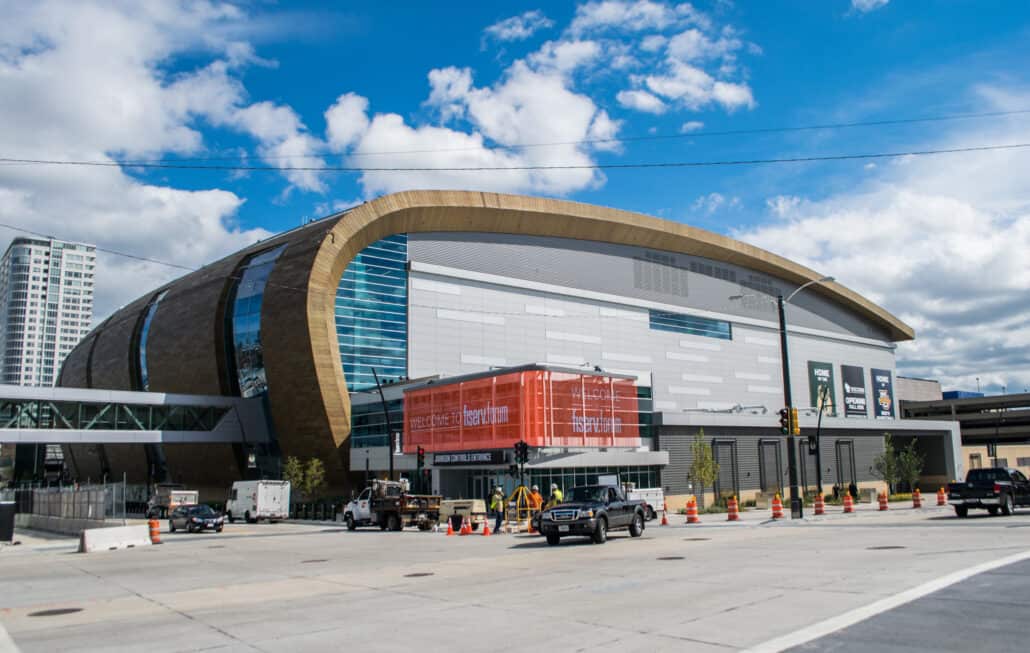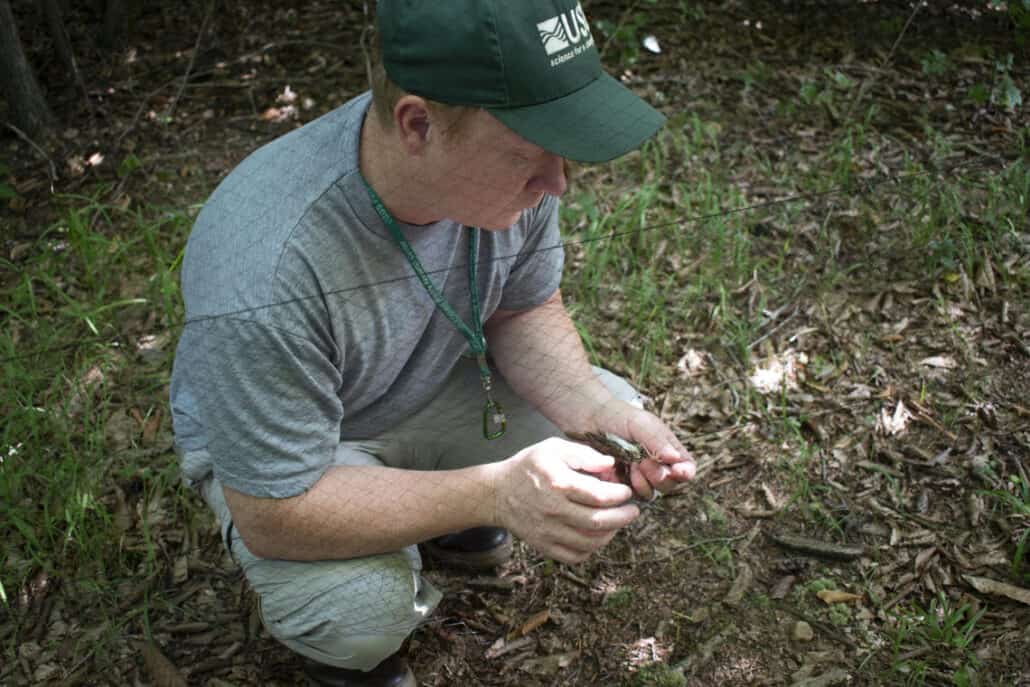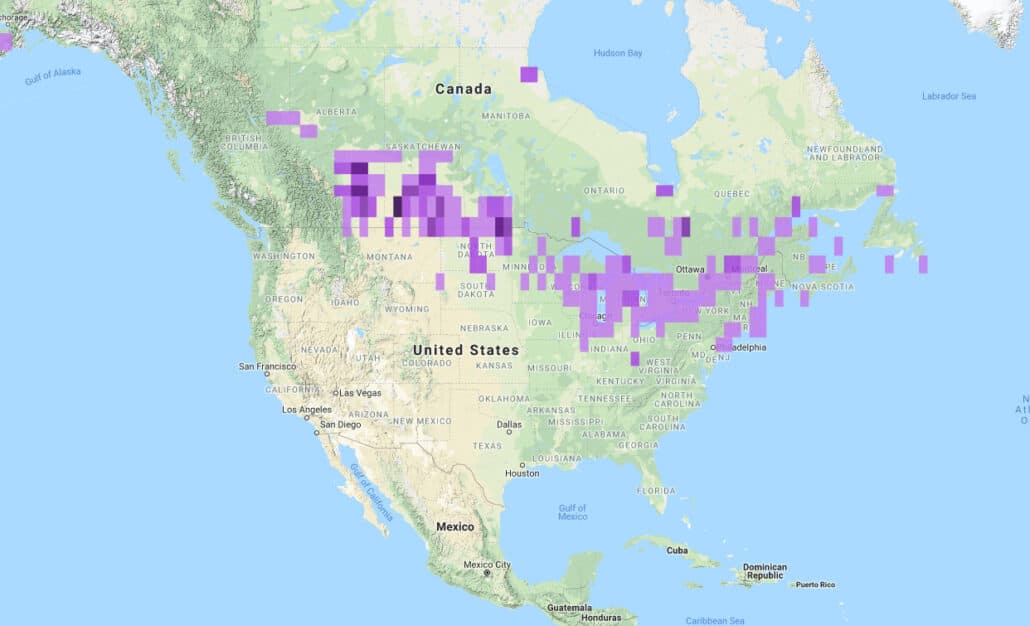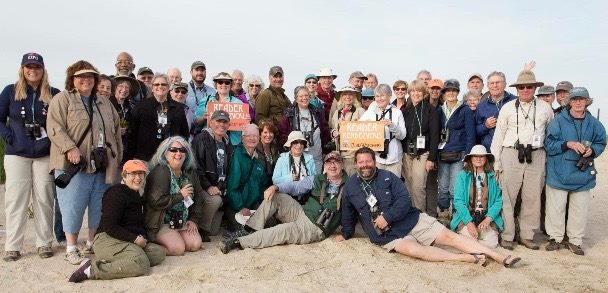
Just shy of six years ago, some of the staff of Bird Watchers Digest and a couple dozen of our friends enjoyed the
Red Knot Reader Rendezvous along the Delaware Bay, perfectly timed to witness northbound red knot migration. Our hosts for the event were members of the leadership of the American Birding Association, including President Jeff Gordon, Events Coordinator Liz Gordon, and the late Bill Stewart, a Delaware native who, at the time, was the ABA’s conservation director.
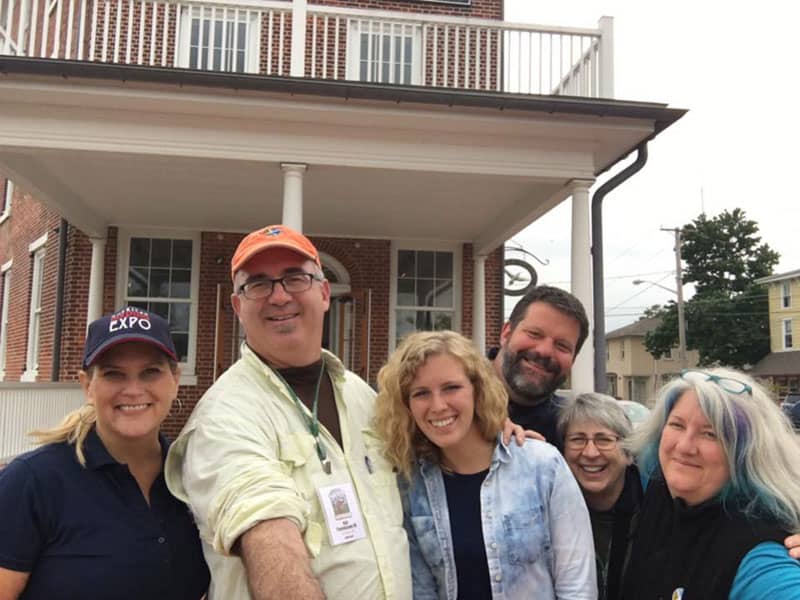
On the second full evening of the event, after a remarkable day of birding, we visited a public beach along Delaware Bay. Jeff and Liz stood with their feet in the shallow water and picked up a giant horseshoe crab to explain its life history and its critical role in the survival of migrating shorebirds, including the threatened rufa red knot. As they began their fascinating talk, a few of the evolutionary ancient crabs floated around their feet. Our hosts told us that horseshoe crabs lay their eggs along the shore during May’s full moon each year, and that these creatures around them had reproduction on their primitive brains even now as they swam ashore. But for decades, they were unprotected, vastly overharvested as a fertilizer additive and Asian aphrodisiac, and their population had been falling precipitously.
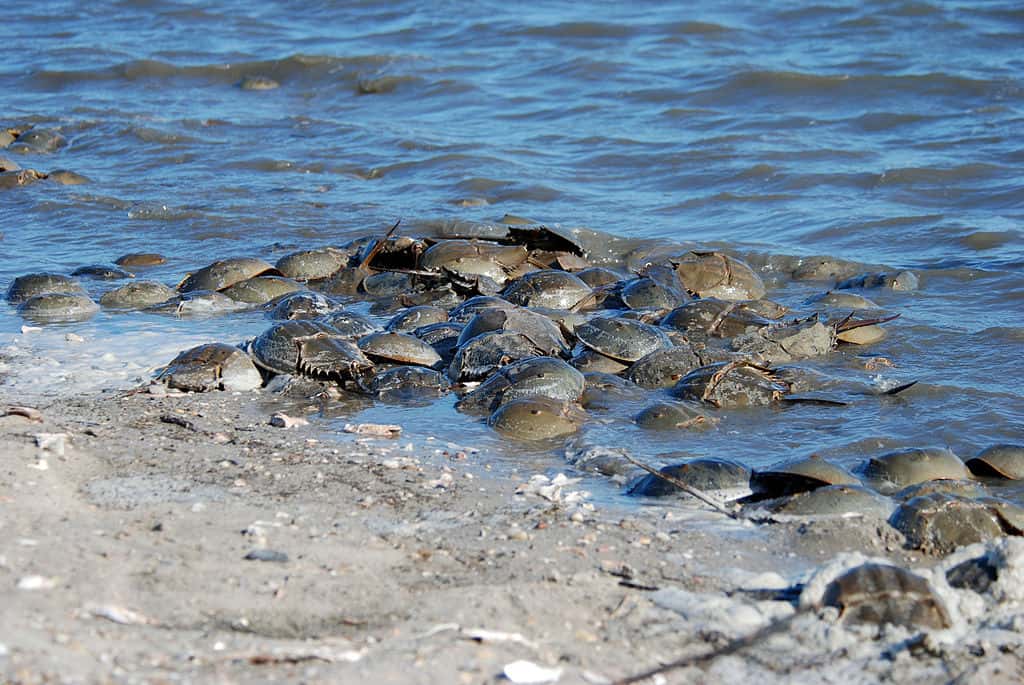
By now, there were dozens of crabs along the shore on both sides of the Gordons and along the beach in both directions, with more arriving by the minute. The northbound migration of the red knots was perfectly timed, they said, to take advantage of horseshoe crab eggs being laid by the billions. The knots had fueled up before leaving their wintering grounds in South America, but had flown nonstop for days to get to the Delaware Bay shoreline. When their food and stored fat reserves ran out, they would start digesting their own internal organs, reaching near starvation at the exact time they fell out of the sky and landed on this very beach, at the exact time the crabs were crawling into the shallow water to lay eggs.
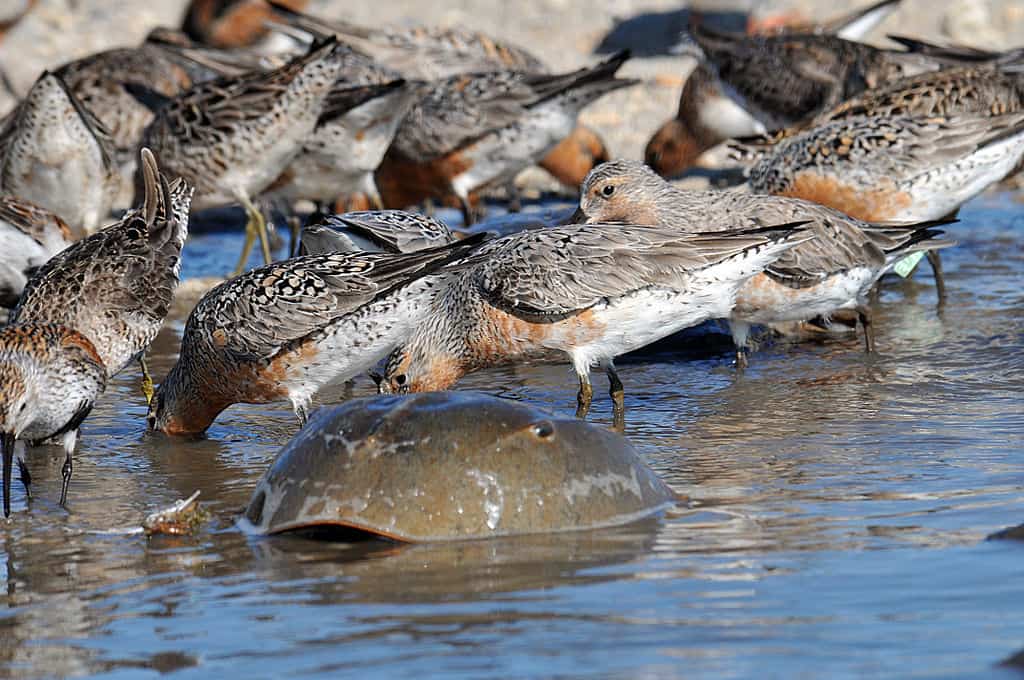
While Liz and Jeff spoke, hundreds—no—thousands of crabs landed at the water’s edge, three deep—no—piles of them, smaller males attaching themselves to larger females, as far as we could see in both directions. It seemed to us that the Gordons, in explaining this fascinating natural history, had conjured the crabs. It was magical. And then they came, as if on cue—the shorebirds. They were ravenous; they were everywhere, appearing almost as magically as the horseshoe crabs. I saw it with my own eyes. I witnessed this spectacle of nature that occurs every year, unbeknownst to the vast majority of Americans.

On subsequent days, we saw countless flocks of shorebirds gorging all along the bay, pigging out to fuel the second leg of their beyond-arduous journey. One of our stops was at the DuPont Nature Center at Mispillion Harbor. There, Bill Stewart told us about long-time and ongoing efforts to preserve and restore the critical horseshoe crab habitat as we were standing on it. Having borne witness to the critical relationship between horseshoe crabs and red knots, the importance of habitat protection was crystal clear.

And in April 2021, the Delaware Department of Natural Resources and Environmental Control, the Conservation Fund, Delaware Ornithological Society, and Delaware Wild Lands, Inc. have announced that after nearly 15 years of hard work, the mile-long Mispillion Harbor shoreline has been secured in perpetuity as a wildlife reserve.
According to the press release, the newly acquired property will undergo habitat restoration for the red knot and is currently closed to the public. And significant to all of us who shared that magical Rendezvous, a celebration at Mispillion Harbor will honor the memory of Bill Stewart, “a renowned ornithologist in the area who helped identify the harbor as a place critical of protection.”
Here’s the news release in full:
KEY PIECE OF MISPILLION HARBOR HABITAT PROTECTED
15-year conservation effort secures an essential stopover for migrating birds, including the imperiled Red Knot
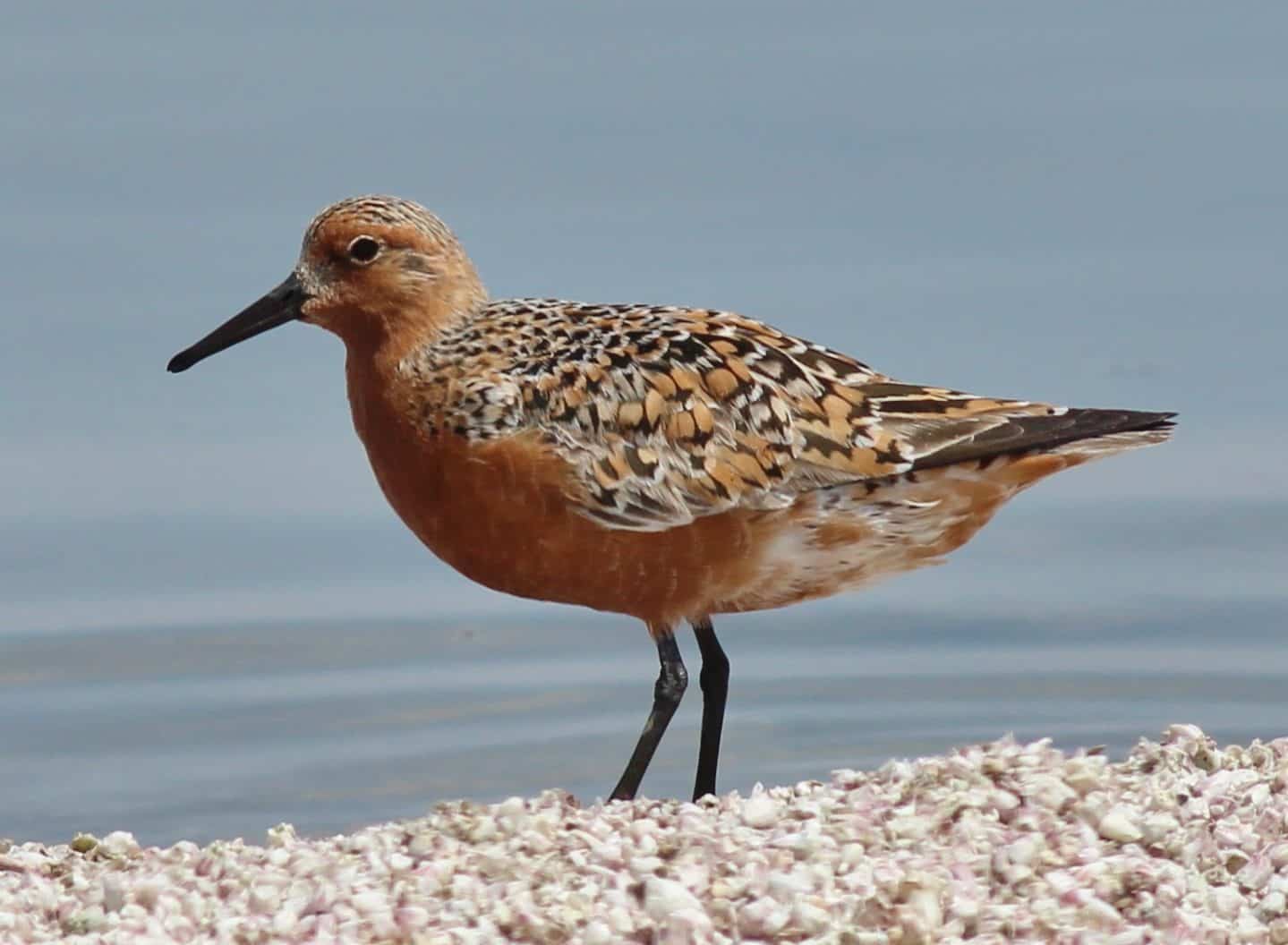
Kent County, Del. (April 6, 2021) — Mispillion Harbor, one of the most important locations for the survival of Red Knots and other migrating shorebirds, has been further protected, announced the Delaware Department of Natural Resources and Environmental Control (DNREC), The Conservation Fund, Delaware Ornithological Society and Delaware Wild Lands, Inc. After nearly 15 years, the partners have protected multiple parcels of private land significant to restoration along the mile-long Harbor shoreline—securing it in perpetuity as a wildlife reserve.
Located on the west shore of Delaware Bay, Mispillion Harbor is uniquely protected from harsh weather elements, making it the perfect location for horseshoe crabs to breed. This attracts migrating shorebirds who rely on a brief stopover at the Bay to rest and feed on the crab eggs. The small but mighty Red Knot—a federally-listed threatened species—undergoes an annual migration from South America to their breeding ground in the Arctic and sub-arctic tundra. In recent years, studies have suggested that 50 to 80% of the entire remaining rufa Red Knot population has been recorded using Delaware Bay beaches. The protection of these lands will provide roosting habitat for the Red Knot for their next migration journey this May—and for all future migrations.
“Protecting Mispillion Harbor is the culmination of over a decade of work and the tireless efforts by many who came together to make sure that this critically important site was protected,” said Blaine Phillips, Senior Vice President and Mid-Atlantic Regional Director at The Conservation Fund. “Horseshoe crabs and shorebirds will finally have a safe place to spawn, rest and continue the amazing spectacle of their marathon migration for years to come.”
Recognizing the Harbor’s importance to Red Knots and other wildlife, The Conservation Fund, a national environmental nonprofit, purchased most of the Mispillion Harbor shoreline in 2006 to prevent any development that would harm the habitat. Over the years, most of that land was transferred to the State of Delaware for permanent protection. DNREC is completing important restoration work and has been operating the DuPont Nature Center—a science-based educational and interpretive facility with interactive exhibits designed to connect people with the Delaware Bay’s natural history and ecology.
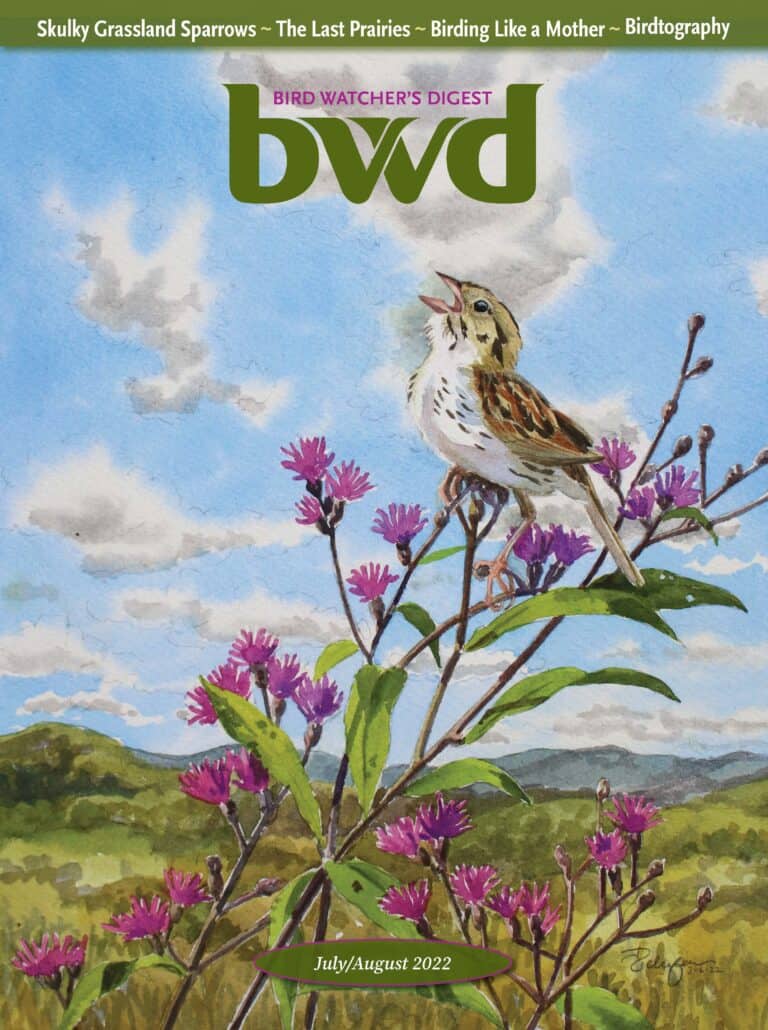
Looking to Subscribe?
Get 6 print issues of the magazine delivered to your door & free digital access
One Year Print Subscription: $26
(to US or Canada, includes digital access)
One Year Digital-only Subscription: $15
“DNREC’s long history of monitoring horseshoe crabs and shorebirds along Delaware’s Bayshore helped identify important places to focus conservation through land protection and habitat restoration—critical work that cannot be achieved by government agencies alone,” said DNREC Secretary Shawn M. Garvin. “It takes a community of conservation partners and their many members, supporters, volunteers and donors working together to raise funds for realizing a conservation vision that will have meaningful impact on the recovery and sustainability of species like Red Knot and horseshoe crabs. This project represents—and celebrates—the best expression of shared responsibility, investment, and success. DNREC salutes the amazing grassroots effort of the Delaware Bird-A-Thon and boundless enthusiasm of Delaware’s conservation community, and our federal partners the U.S. Fish and Wildlife Service who made the protection of Mispillion Harbor possible.”
Two private parcels significant to restoration in the Harbor were officially protected in February 2021 when The Conservation Fund transferred the property to DNREC. The completion of this effort provides for the expansion of horseshoe crab and shorebird restoration and management efforts.
DNREC was awarded a Cooperative Endangered Species Conservation Fund grant, administered by the U.S. Fish and Wildlife Service, which provided significant funding to protect multiple parcels at Mispillion Harbor. The grant and protection of these parcels at Mispillion Harbor would not have been possible without the involvement of partners and the generous contributions from the Allerton Foundation, Delaware Wild Lands and the Delaware Ornithological Society (DOS).
“The permanent protection of this property, and the vision exemplified by The Conservation Fund, State of Delaware, Delaware Ornithological Society, and Delaware Wild Lands, exemplify what can be achieved with strong leadership and collective effort,” said Kate Hackett, Executive Director at Delaware Wild Lands. “The persistence and patience of this partnership, and ability to coalescence around this high priority land protection project, is outshone only by the global significance of habitat at Mispillion Harbor. Delaware Wild Lands is pleased to have contributed to the completion of this project and supported our partners in conservation, and we believe this level of collaboration can and will serve to inspire others toward even more habitat conservation and restoration.”

“The Delaware Ornithological Society is thrilled to join our partners in celebrating the protection of the single most important site in the First State for migratory shorebirds,” said DOS President Michael Moore. “The acquisition of this property achieves a long-term goal of our grassroots Delaware Bird-A-Thon fundraiser and is a key step in realizing the vision of its founder, the late Bill Stewart, who saw the potential of Mispillion Harbor as a crown jewel of shorebird habitat, research and ecotourism along Delaware’s Bayshore.”
Matthew Sarver, DOS Conservation Chair said: “This acquisition will result in enhanced protection of the federally-listed threatened rufa subspecies of the Red Knot, as well as numerous other species of migratory shorebirds, while improving access to the DuPont Nature Center for birders and other visitors. DOS would like to thank our many donors to the Delaware Bird-A-Thon for helping make this project a reality!”
The newly acquired property will undergo habitat restoration for the Red Knot and is currently closed to the public. The partners will have a celebration at the Mispillion Harbor site at a later date to honor the memory of the late Bill Stewart, a renowned ornithologist in the area who helped identify the Harbor as a place critical of protection.
The Conservation Fund, http://www.conservationfund.org
The Delaware Department of Natural Resources and Environmental Control, https://dnrec.alpha.delaware.gov
Delaware Wild Lands, http://www.dewildlands.org
Delaware Ornithological Society, https://www.dosbirds.org

